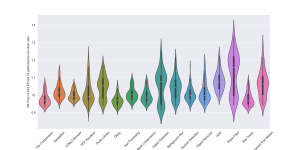Interesting … then there’s an inconsistency with the results
@Jimmyjames posted from Tom's Guide showing the A18 Pro losing to the A750 GPU on Steel Nomad Light.
Edit: This isn’t them cooling it with liquid nitrogen is it?
EDIT2: Doesn't appear to be. And the 8 gen 3 scores are pretty much the same. Huh. They also have the A17Pro beating the 8 gen 3 in Steel Nomad Light too.
EDIT 3:
Apple iPhone 15 Pro Phone review with benchmark scores. See how it compares with other popular models.

benchmarks.ul.com
Samsung Galaxy S24+ (SDM8Gen3) Phone review with benchmark scores. See how it compares with other popular models.

benchmarks.ul.com
Tom's S24 Ultra result is a little higher than the S24+ result above but not out of the range of other 8 gen 3 results:
See the best Smartphones and Tablets ranked by performance.

benchmarks.ul.com
Xiaomi 14Pro result which should be the same as in the video:
Xiaomi 14 Pro Phone review with benchmark scores. See how it compares with other popular models.

benchmarks.ul.com
which is a little lower than the S24+/Ultra results from UL/Tom's.
No data on UL's website for the iPhone 16 (Pro) yet, but this is more in agreement with Tom's than Geekerwan whose results show the iPhone 15 pro beating the Xiaomi 14 Pro. The A18 Pro should be about 10-15% faster than the iPhone 15 Pro above. Tom's has it about 12% faster which makes sense and would indeed place it behind the 8 gen 3 and Dimensity 9300+ - again those latter scores Geekerwan agrees with. I'd say it looks likely that Geekerwan screwed something up here but only with their iPhones somehow ... not sure.
Now I'm curious how Geekerwan gets the GPU to adopt three different performance points ... there's only low power mode right?
EDIT 4: Geekerwan's FPS line up with Tom's Guide/UL though - For the A18 Pro Tom's got ~11.6, Geekerwan got 11.63. And for the A17 Pro Geekerwan say 9.47 FPS while UL says 9-10 FPS. So why are the scores so different?



